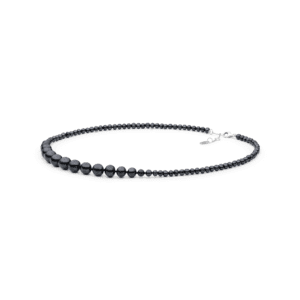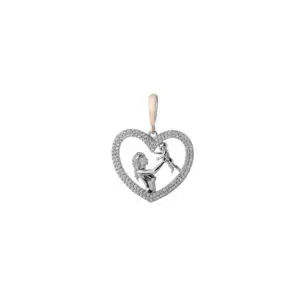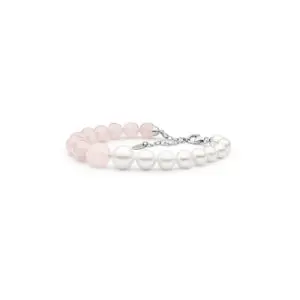June – Pearl, Alexandrite and Moonstone
Pearl
The lucky ones born in June have a choice between three gemstones – pearl, alexandrite and moonstone. Pearls are the only gemstones made by living creatures. Molluscs produce pearls by depositing layers of calcium carbonate around microscopic irritants that get lodged in their shells. These rare gemstones do not require any polishing to reveal their natural lustre.
Because natural pearls were so rare throughout history, only the richest could afford them. They became more accessible in the early 1900s when the first commercial culturing of saltwater pearls began in Asia. Since the 1920s, cultured pearls have almost completely replaced natural pearls in the market, making them affordable for nearly any budget. They are cultured or farmed by implanting a grafted piece of shell (and sometimes a round bead) into pearl oysters or freshwater pearl mussels. They are still natural pearls, however, grown with a little bit of help. Pearls used to be found in many parts of the world, but wild pearling is now very limited.
Pearls are one type of few gemstones not measured by carats. Lustre is the most important aspect of choosing a pearl. The finest pearls are metallic and reflective like mirrors. Pearls can range in size from 3mm to 13mm in size. Since pearls do not require polishing or faceting like most gemstones, finding a pair of pearls that match perfectly in size, colour and lustre is difficult. A matched strand of wild pearls may sell for hundreds of thousands, if not millions. Therefore, cultured pearls are more popular. Pearls are very soft, ranging between 2,5 and 4,5 on the Mohs scale. They are sensitive to extreme heat and acidity. In fact, calcium carbonate is so susceptible to acid that pearls would dissolve in vinegar.
Because perfectly round, smooth natural pearls are so uncommon, the word “pearl” can refer to anything rare and valuable. As with all birthstones, there are various myths and legends surrounding pearls. Ancient Greeks believed that pearls were the tears of the gods. Ancient Japanese believed that they were created from the tears of mythical creatures like mermaids and nymphs. In early Chinese civilizations it was believed that dragons carried pearls between their teeth and the dragon must be slain to claim the pearls, which symbolised wisdom. In addition to pearl being one of the birthstones for June, it is also frequently gifted on 1st, 3rd, 12th and 30th wedding anniversaries as well as often worn by brides on their wedding day.
Alexandrite
It was discovered in Russian emerald mines located in the Ural Mountains. Legends suggest that it was discovered in 1834 on the same day that future Russian Czar Alexander II came of age, which is why the name for the gemstone was given in his honour. It also became the official gemstone for Imperial Russia. After Russia’s mine deposits were exhausted, the popularity of alexandrite went away until new supplies were discovered in Brazil. Now, Brazil, Sri Lanka and East Africa are the main sources, although alexandrite found in these regions is not as vividly coloured as the original gemstone found in Russia.
It is often described as emerald by day and ruby by night as it changes colour from bluish green in daylight to purplish red under artificial light. This chameleon-like behaviour is the result of its uncommon chemical composition, which includes traces of chromium (this element is also found in emerald). The unlikelihood of these elements combining under the right conditions makes alexandrite one of the rarest, costliest gemstones even more expensive than rubies and diamonds. With a hardness of 8,5 on the Mohs scale, it is softer than sapphire and harder than garnet.
It is believed to be associated with concentration and learning. It is believed to strengthen intuition, aid creativity and inspire imagination of the wearer.
Moonstone
Moonstone exhibits unique colouring. Different layers of colour create a cloudy illusion. Prominent colours include blue and white. Additional colours rang from yellow, pink, green, orange, brown and grey. It is relatively low in hardness (6 on the Mohs scale), which makes it prone to cracking.
This stone is believed protect fertility, travellers and encourage sleep and dreams. The Romans admired it, believing it was formed from moonbeams. Both the Romans and the Greeks associated it with their lunar deities. Florida adopted moonstone as its official state gemstone in 1970 to commemorate the Apollo 11 moon landing and other spaceflights that launched from Florida, even though moonstone is not naturally found in Florida or on the moon.
The finest classical moonstones – colourlessly transparent with a blue shimmer – come from Sri Lanka. They are also found in India, Australia, Myanmar, Madagascar and the United States. Indian gemstones (which are brown, green or orange in colour) are more abundant and affordable than the classical blue shade gemstone.










